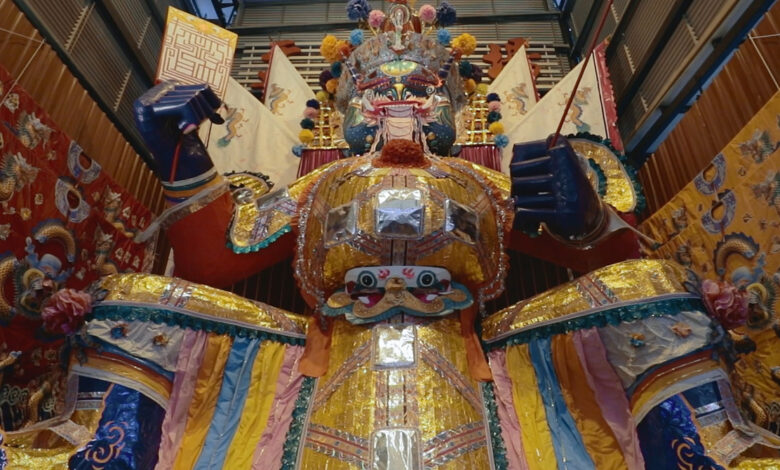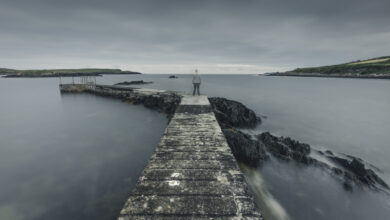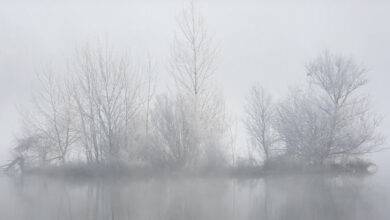Filming Malaysia’s Biggest Da Shi Ye Effigy at the Hungry Ghost Festival with Canon 1DX Mark II

With a history spanning over 130 years, the Hungry Ghost Festival in Bukit Mertajam is one of Malaysia’s oldest and most important cultural events.
Rooted in Taoist and Buddhist traditions, the festival is dedicated to appeasing the spirits of the dead, who are believed to roam the earth during the seventh month of the lunar calendar. Bukit Mertajam, a town rich in community traditions and deep cultural roots, has become an important hub for the festival. The event is known for its elaborate rituals, vibrant celebrations and large paper effigies, attracting both devotees and tourists. The highlight of the festival is the towering paper effigy of Da Shi Ye (King of Hades), which represents the guardian of the underworld and is the focal point for prayers and rituals. This deep-rooted tradition has made Bukit Mertajam synonymous with the Hungry Ghost Festival, attracting both local and international attention.
Background of Hungry Ghost Festival
The Hungry Ghost Festival has deep significance in Chinese culture, marking the time when the gates of the afterlife open, allowing the souls of the dead to return to the mortal world. During this time, living descendants perform rituals and offer offerings to appease these wandering spirits, ensuring their comfort and peace. The festival reflects core Chinese values of filial piety, respect for ancestors, and belief in the connection between the living and the dead.
In Bukit Mertajam, the festival is marked by elaborate rituals, including the burning of incense, joss paper, and offerings of food to honor the spirits. Central to these rituals is the construction and eventual burning of an effigy of Da Shi Ye (King of Hades), which symbolizes the community’s collective efforts to care for the spirits, thus preventing misfortune or unrest in the mortal world. The event highlights the cultural importance of maintaining harmony between the living and spiritual realms, a cornerstone of Chinese tradition.
Choosing filming equipment
Despite newer and better cameras, my gear selection was simple. I needed a camera that could shoot at a high frame rate of at least 50fps since I was in a PAL region. While 4K resolution wasn’t a must, it did allow for more flexibility in post-production. From previous experience with events, I knew I would need a camera that would perform well in low light and could withstand rain, water, and heat. With my current camera collection, the choice was clear. Despite being an 8-year-old camera, the Canon 1DX Mark II was the obvious choice due to its ability to shoot up to DCI 4K at 50fps, the highest frame rate of any of my gear. It was also fully compatible with my L-series EF lenses without the need for an additional adapter. Plus, I have peace of mind knowing that if the camera breaks during this personal project, it won’t be too expensive to replace.
For lenses, I mainly use Canon 16-35mm f/4L IS and Canon 100mm f/2.8L IS Macro Lens. Lens stabilization is important, as I shoot handheld, and the Canon 1DX Mark II does not have in-body image stabilization. Using the 1.3x crop factor to my advantage when shooting DCI 4K on the Canon 1DX Mark II allowed me to streamline my lens choices by eliminating mid-range lenses while still maintaining versatility throughout the festival. Since the Canon 1DX Mark II does not have any Log video profiles, I also pre-installed Technicolor Cinestyle Custom Profile to maximize dynamic range and allow more flexibility in grading footage in post-production.
This film did not use drones to comply with local government regulations and also to minimize the risk of injury if the drone crashed since there were so many people on the ground.
Creative decisions and challenges in filmmaking
With the festival’s dense crowds, I prioritized flexibility, keeping my filming setup to a minimum to allow for easy movement. The entire event was shot using natural light and a run-and-gun technique, capturing everything I could myself. I also relied heavily on the camera’s autofocus to keep the slightly chaotic footage in focus.
With no control over the festival’s script, I made the creative decision to let the film’s story develop naturally, adapting to the spontaneous nature of the event and improvising along the way. In the film, suspense is built from the start, introducing the legendary figure of Da Shi Ye as worshippers pay their respects. The full size of Malaysia’s largest paper statue of Da Shi Ye (King of Hades), standing at 8.96 metres tall, is only revealed at the climax, portraying him as a mythical figure, the Guardian of Ghosts. The reveal of the Da Shi Ye statue at the climax brings a sense of relief and closure, mirroring the end of the festival.
As mentioned earlier, the decision to skip using drones was also a creative decision to keep the entire film focused on a personal level. Although it would have been better to have an establishing shot of the entire festival.
Conclusion and thoughts
Documenting and researching this traditional festival was an eye-opening experience that gave me a greater appreciation for our cultural practices. As filmmakers, we have the unique ability to preserve these traditions through the medium of film, ensuring they continue to be celebrated and remembered.




